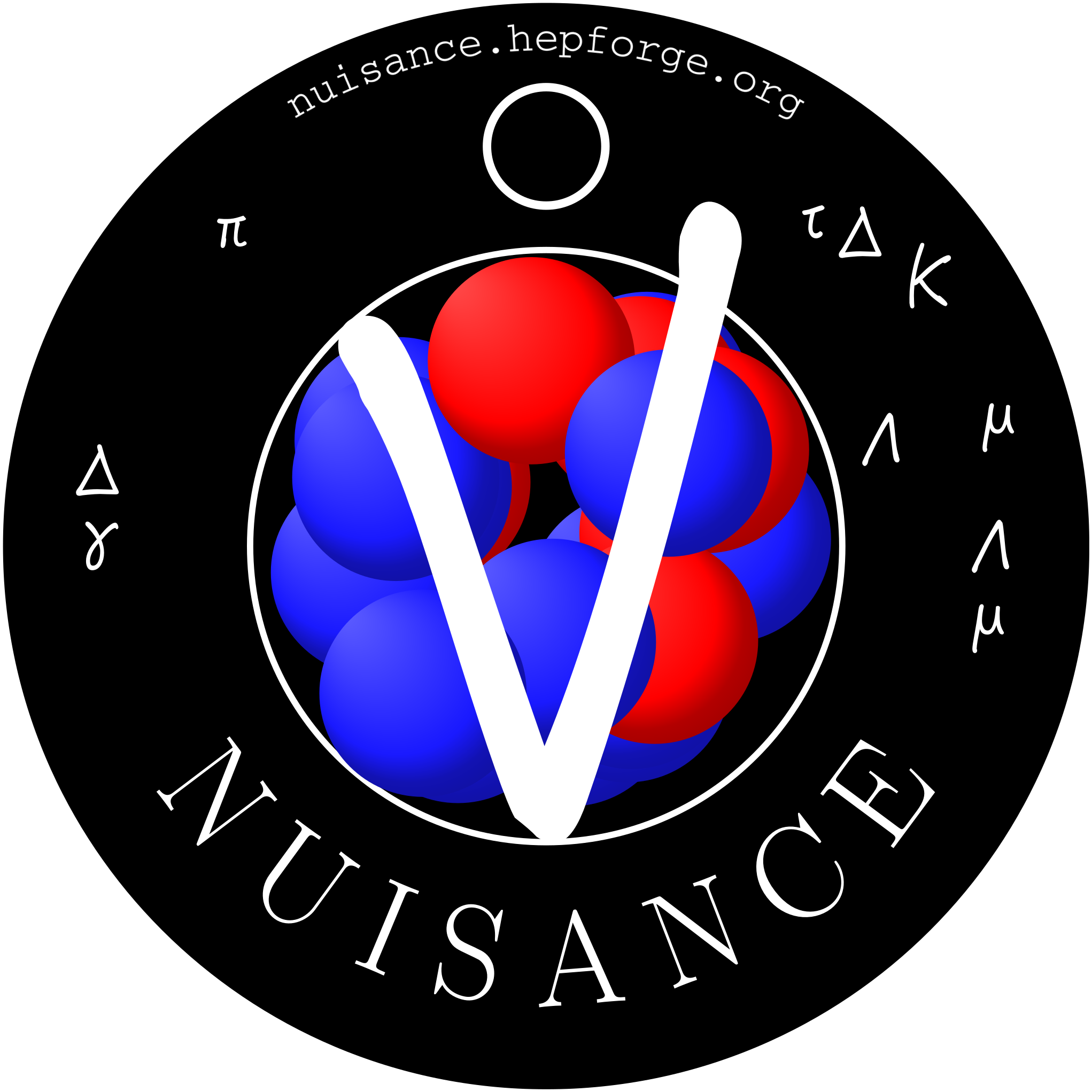| Version 4 (modified by , 9 years ago) (diff) |
|---|
[ page being built ]
This page aims to outline how to use NEUT to create a sample of interactions on your favourite target. We'll also outline how to feed this generated sample through the NUISANCE framework and get good results.
Compiling NEUT and running neutsmpl
The main neutrino-nucleus interaction generator lives in src/neutsmpl/neutroot. NEUT has two dependecies: ROOT and the lesser known CERNLIB. You need to have $ROOTSYS, $CERN and $CERN_LEVEL environment variables set-up to compile NEUT. Compilation is done (somewhat inconveniently) by running ./Makeneutsmpl in src/neutsmpl/. This calls a host of makefiles, sets up symlinks and so on. If you want to fix this and have the time, please contact us or Hayato-san.
Running the main executable is done by ./neutroot CARD_FILE.card OUTPUT_ROOT_FILE.root, where CARD_FILE.card is a card file compliant with your chosen NEUT version, and OUTPUT_ROOT_FILE.root is the output file where the events are to be saved.
Hot tip: NEUT can be quite verbose and you might want to pipe the output to file (or /dev/null...) rather than dump it to screen. This can actually speed up NEUT considerably.
Structure of card files:
NEUT inputs for NUISANCE
The output of neutroot, a neutvect, can be read in by NUISANCE to generate predictions. neutroot also saves the predicted flux and event rate predictions automatically into the neutvect files so NUISANCE already has everything it needs.
To read NEUT inputs the NEUT type just needs to be specified.
sample MiniBooNE_CCQE_XSec_1DQ2_nu NEUT:/path/to/neut/input/file.root
Using NEUT ReWeight?
Joint Flux Inputs
neutroot does not yet natively support combined beams or targets so if you want to use the measurement classes that require this (e.g. MINERvA CC0pi nue+nuebar) you will have to setup a JOINT input. See HowToJointInput? for more information on how to achieve this.
